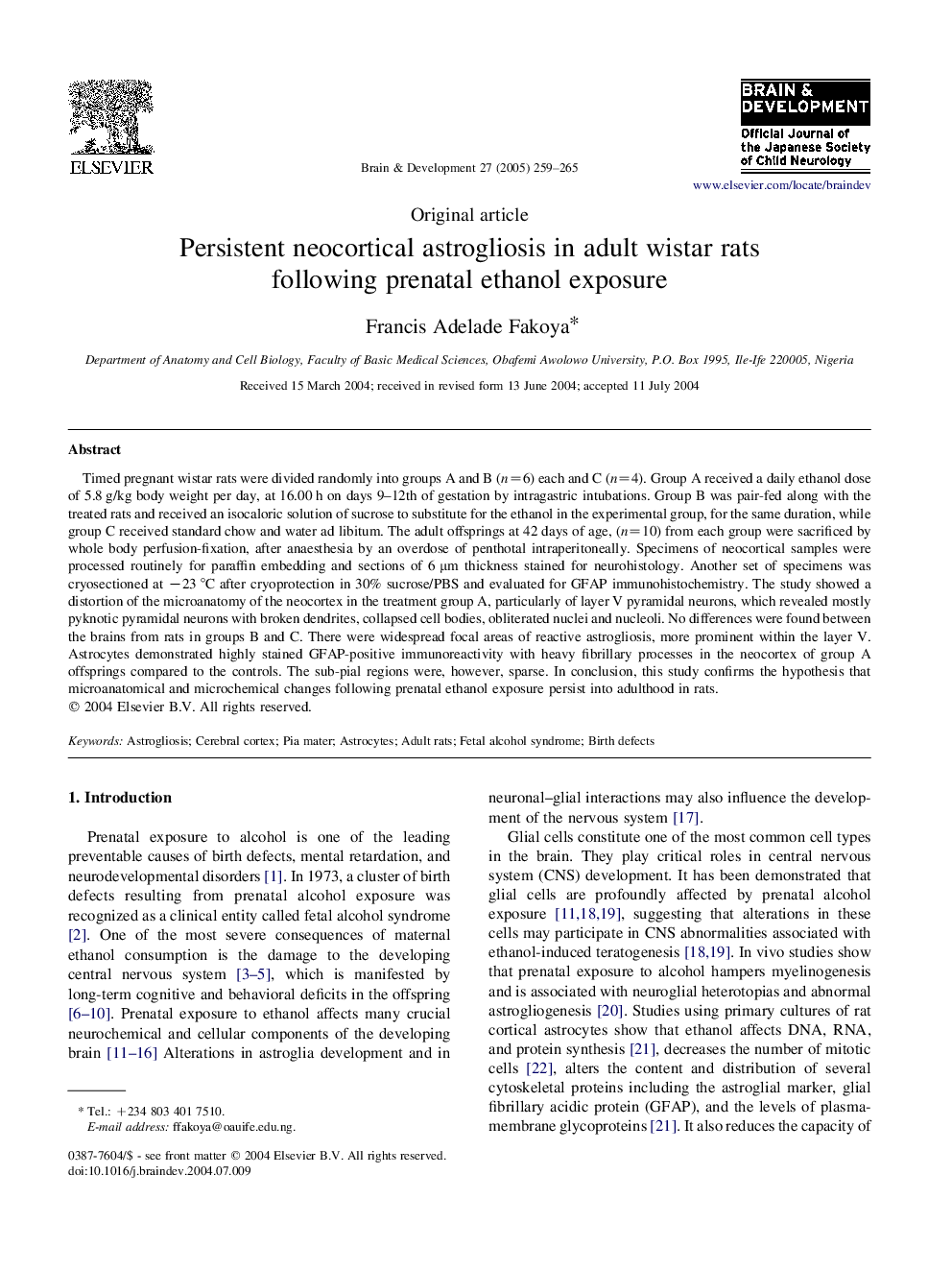| Article ID | Journal | Published Year | Pages | File Type |
|---|---|---|---|---|
| 9187240 | Brain and Development | 2005 | 7 Pages |
Abstract
Timed pregnant wistar rats were divided randomly into groups A and B (n=6) each and C (n=4). Group A received a daily ethanol dose of 5.8 g/kg body weight per day, at 16.00 h on days 9-12th of gestation by intragastric intubations. Group B was pair-fed along with the treated rats and received an isocaloric solution of sucrose to substitute for the ethanol in the experimental group, for the same duration, while group C received standard chow and water ad libitum. The adult offsprings at 42 days of age, (n=10) from each group were sacrificed by whole body perfusion-fixation, after anaesthesia by an overdose of penthotal intraperitoneally. Specimens of neocortical samples were processed routinely for paraffin embedding and sections of 6 μm thickness stained for neurohistology. Another set of specimens was cryosectioned at â23 °C after cryoprotection in 30% sucrose/PBS and evaluated for GFAP immunohistochemistry. The study showed a distortion of the microanatomy of the neocortex in the treatment group A, particularly of layer V pyramidal neurons, which revealed mostly pyknotic pyramidal neurons with broken dendrites, collapsed cell bodies, obliterated nuclei and nucleoli. No differences were found between the brains from rats in groups B and C. There were widespread focal areas of reactive astrogliosis, more prominent within the layer V. Astrocytes demonstrated highly stained GFAP-positive immunoreactivity with heavy fibrillary processes in the neocortex of group A offsprings compared to the controls. The sub-pial regions were, however, sparse. In conclusion, this study confirms the hypothesis that microanatomical and microchemical changes following prenatal ethanol exposure persist into adulthood in rats.
Keywords
Related Topics
Life Sciences
Neuroscience
Developmental Neuroscience
Authors
Francis Adelade Fakoya,
